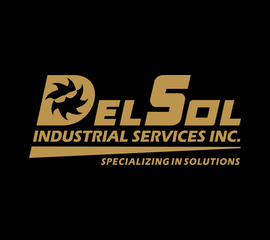A LADLE IS A LADLE???
For years the Foundry Industry perception was a “Ladle is a Ladle”. They come in different sizes and configurations; some U-Shaped some Round, some tall, some short and fat. Also treatment ladles just needed to be tall to allow the Mg to bubble up through the molten metal.
Today we know differently, the Ladle is a tool and with proper size and configuration will enhance production and ergonomics.
When purchasing a ladle there are many factors to take into consideration. To begin, what capacity do you need? Looking at this remember next year you may need another 100 pounds of metal.
Gearing or Hand Tilt?
Hand Tilt Ladles offer the best control when pouring, but also expose the operator to Shoulder Injuries.
Geared Ladles offer better ergonomics and with proper gearing mimic Hand Tilt Pouring. Better control and safer operation equals more production. Today, hand wheel forces play a huge roll in production. The heavier the hand wheel forces, the more fatigue, which equates to less ton per hour poured.
Motorized Tilt on larger ladles improve both production and ergonomics as well as creating a safer environmental for the operator.
Ladle type plays a huge roll for pouring ladles. Consistent head pressure and flow rate increases the quality of the casting.
Spout Design provides the consistency that years of experience typically would provide. Maintaining the distance from the spout to the top of the mold is crucial. Metal trajectory should be taken into consideration. Lofting the metal stream to a sprue cup located on the other side of the mold will result in spillage and splash. Often this also causes the ladle to bump against the flask causing problems at the parting line and knocking sand into the mold. A longer spout will greatly reduce these problems.
Teapot style ladles present cleaner metal by pulling the metal from the bottom of the ladle. This leaves the slag and contaminations floating on top, and can be poured off after castings are poured. These ladles are used when there is a high contamination present. The drawback is the Teapot Spout tends to have a lower temperature and metal freezes in them.
U-Shape design brings features to the process often overlooked. This style ladle allows for more capacity in a Low Head Room situation. These can be an open spout or teapot spout. The Spout configuration can easily be changed for length and rotation. The U-Shaped ladles typically come with a cover to help retain heat. When considering a ladle, don’t rule out the U-Shaped.
Disposable Precast Liners offer better heat retention, reduce labor, and offer cleaner metal. If you are considering going to a precast liner the ladle should be designed for the liner. Castable is much heavier than precast and the ladle needs to balanced for the one or the other. Proper fit is another issue, ½ to 1 inch backing sand is recommended, and you need to allow for this.
If heat loss is an issue for you, Covers on Ladles will help reduce this lose. Today we use an open design utilizing Ceramic Board for insulation. This board is much lighter and provides good insulation. Cover design is important; Single Pin Swing Covers offer the most convenient style.
When considering a new ladle for your Pouring Deck always keep in mind, “ it is better to design in features rather than add them later.”
Over the years, treating Ductile Iron has changed dramatically. Cost of raw material has had the greatest effect on these changes. All foundries are looking for ways to reduce the Mg usage. Covered treatment ladles offer several cost savings in the treatment process.
Not requiring cover steel reduces the tap temperature. Mg burns at a specific rate, lowering the tap temperature reduces that burn rate which means more Mg is exposed to the molten metal. There is also a cost savings in lowering your tap temperature.
Tight Covers also trap the gases allowing for better mixture. The tight cover reduces the oxygen in the ladle and lowers the slag and increases the fade time. Controlled venting allow for less emissions and easier method for capturing them. The Tight Cover also helps to retain heat and provides for longer hold time. These are only some the advantages to Tight Cover Treatment Ladles.
A ladle is not just a ladle. Examining your specific process and areas of concern will give you better quality product, cost savings, and a better working environment for you and your employees.
Standard Ladle sizes and design are no longer the norm. Custom designed to fit your specific application is the new standard ladle. So look at your process and design out the areas that are causing problems.
Article By:
Denny Rach
President



